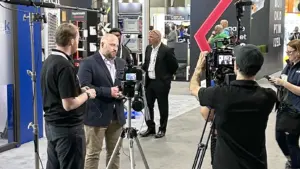CHIPS Act Will Bring A Wave of R&D to Semiconductor Manufacturing
The U.S.’ tech supply chain is getting a strategic helping hand from Congress, as the CHIPS ACT (Creating Helpful Incentives to Produce Semiconductors) has passed both the House and Senate, 243-187 and 64-33, respectively. Designed primarily to boost semiconductor manufacturing in a bid to compete with China’s strength in the sector while also addressing the massive impact of microchip shortages on the U.S. economy, it’s estimated that the “chip shortage cost the U.S. economy $240 billion in 2021” alone.
The fact is that microchips affect every aspect of daily life, from gaming systems to televisions, computers to mobile phones, smart refrigerators to barbecue grills, and medical devices to cars. There is really no aspect of modern tech-dependent life across the globe that isn’t influenced by microchips dozens of times a day, if not dozens of times an hour. Manufacturers throughout the world suffered from shutdowns that disrupted chip production in Asia, losing the ability to meet customer needs. For carmakers, the inability to access chips resulted in losing approximately $210 billion dollars across the industry.
Matthew Putnam, Ph.D., is the current CEO at Nanotronics, a company that is at the forefront of redefining manufacturing controls by utilizing artificial intelligence, automation, and advanced imaging technologies. He’s an expert in nanotechnology and, in speaking to him about the recent bill’s passing, shared nothing but enthusiasm for the CHIPS Act and how he sees it creating a robust semiconductor manufacturing network on U.S. soil.
“I think this is a really good opportunity. I think that distributed manufacturing is something that we do not really consider in this era of globalization and that this CHIPS act actually helps us compete in this way. I like the idea of globalization, but I also like the idea of building things where you want them when you need them and this is a real chance to do that,” Putnam said.
The trend to bring a variety of supply chain operations home across multiple industries is only growing as supply chain disruptions continue to pose problems for U.S. manufacturers. According to its staunchest supporters, having the ability to source critical components from local sources will help protect the U.S. economy and improve national security by creating more independence on critical Industry 4.0 components. But while meeting the U.S. mandate of economic dominance remains a priority for Congress, the CHIPS Act attempts to address this both in the short- and long-term through investments in R&D.
“This is the first opportunity that our government has put forward to invest in new types of materials and artificial intelligence, and even quantum computing all at the same time,” Putnam said. “It’s not just this CHIPS Act. But CHIPS Act enabled that we can now use artificial intelligence to close factories and make them absolutely self-supporting.”
The CHIPS Act will provide “more than $52 billion for the semiconductor industry, including $39 billion to improve domestic facilities and equipment for manufacturing. It would also establish a 25 percent tax credit and other incentives for investments in semiconductor manufacturing” (The Hill).
For players in the industry, it will be important to identify where these funds and incentives will best fit into the current business model as well as what they are envisioning for the future. Putnam puts the challenge into perspective.
“I think oftentimes people focus on the wrong things. Everybody wants to have the next five-nanometer node factory but so many applications actually don’t require it and are more specialized. You can have factories that exist already that can be used for most applications from automotive to appliances to cell phones all that require technologies that already exist. This money can be reinvested into those old fabs by using artificial intelligence and new types of processes to make them more productive,” he said.








